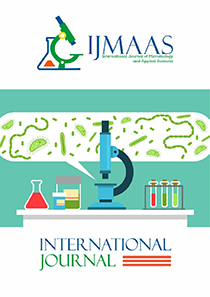Analysis of Virulence Traits in Escherichia coli from Human and Poultry Faeces
Vol 2, 2023
KEYWORDS
Faeces, poultry, poultry workers, phenotypic assays, E. coli, virulence features
Abstract
Extraintestinal pathogenic Escherichia coli (ExPEC) strains are significant pathogens that cause a variety of illnesses in humans and livestock. It is widely assumed that E. coli isolates from poultry faeces include ExPEC-associated virulence genes and hence appear potentially dangerous. They might potentially be transferred to people by handling and/or consumption of contaminated meat. The current study was carried out to investigate the prevalence of Escherichia coli isolated from fifty (50) poultry faeces and 50 faeces samples of poultry workers from a poultry farm in Choba, Rivers State, Nigeria as well as to detect and compare the outcomes of five E. coli virulence features in both sources using phenotypic assays. Biochemical analysis found 57 E. coli isolated from 100 faecal samples of poultry and poultry workers. Confirmed isolates were subjected to virulence characterization using phenotypic assays and virulence results from both sources were compared. The study found the highest incidence of E. coli in human faeces (poultry workers/consumers) (62%), the lowest in poultry faeces (52%), and an overall E. coli prevalence of 57%. The poultry employees had a higher frequency of distribution of virulence features such as protease, colicin, and hemolysin than poultry faeces. None of the isolates tested positive for haemagglutination. It was discovered that human E. coli isolates have stronger virulence characteristics than poultry isolates. These data supported the concept that the more an organism’s virulence characteristics, the greater its pathogenicity. Finally, the findings demonstrated the diversity of E. coli isolates but did not support the likelihood of zoonotic transmission.
Current: Vol. 4, Issue 1, 2025

Call for papers
The International Journal of Microbiology and Applied Sciences warmly welcome your valuable articles for publication.
